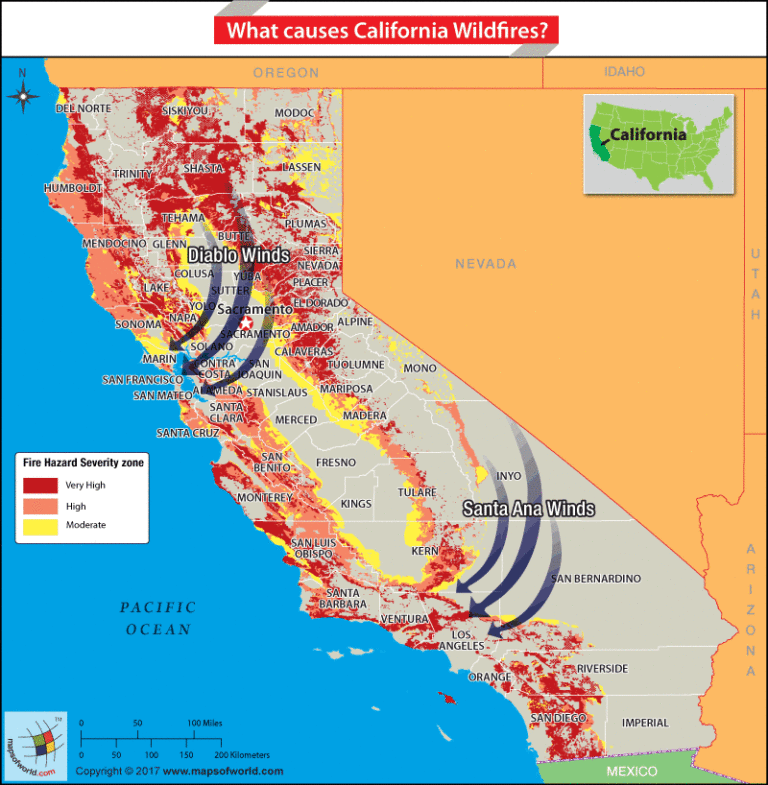
Inferno in California: A Complex Catastrophe
California's wildfire crisis has reached unprecedented levels, leaving a trail of devastation and raising critical questions about its causes, impacts, and the effectiveness of current response measures.
Causes: A Tangled Web
Climate Change
Years of drought and rising temperatures have parched California's vegetation, turning it into a tinderbox. Climate change is intensifying these conditions, making wildfires more frequent and severe.
### Mismanagement of Forests
Decades of fire suppression have led to an overgrowth of dense vegetation, providing more fuel for wildfires. Logging and other land-use practices have also contributed to the problem.
Human Factors
Careless campfires, discarded cigarettes, and arson account for a significant number of wildfires. Human activities in fire-prone areas further increase the risk.
Impacts: Devastating and Far-reaching
### Loss of Life and Property
Wildfires have claimed countless lives and destroyed thousands of homes, businesses, and communities. The economic cost of these losses is staggering.
### Air Quality Degradation
Wildfires release vast amounts of pollutants into the atmosphere, creating hazardous air quality conditions. The smoke can travel hundreds of miles, impacting even distant areas.
### Water Contamination
Wildfires can contaminate water sources with ash, sediment, and chemicals. This poses significant health risks and disruption to water supplies.
### Long-term Effects on Ecosystems
Wildfires alter ecosystems, destroying wildlife habitat and reducing biodiversity. They can also lead to soil erosion and increased flooding risks.
Evacuations: A Chaotic Necessity
Evacuations are a critical aspect of wildfire response, but they present their own challenges.
### Lack of Communication
Residents often receive insufficient or confusing evacuation orders, leading to delays and potential danger. Improving communication systems is essential.
### Transportation Difficulties
Evacuating during a wildfire can be difficult due to road closures and heavy traffic. Vulnerable populations, such as the elderly and disabled, may require assistance.
### Mental and Emotional Toll
Evacuations can be traumatic for residents, who may lose their homes, possessions, and sense of security.
Different Perspectives: A Spectrum of Opinions
### Land Management: Conservation vs. Controlled Burning
Some argue for more aggressive forest management, including controlled burns, to reduce fuel buildup. Others emphasize conservation measures to protect ecosystems.
### Firefighting Strategies: Suppression vs. Containment
Traditional firefighting methods focus on suppressing fires as quickly as possible. Some experts propose a more containment-based approach, letting fires burn in uninhabited areas.
### Climate Change Mitigation: The Root of the Problem
Addressing climate change is seen by many as the ultimate solution to the wildfire crisis. Reducing greenhouse gas emissions is essential to mitigate the underlying causes.
Data Points: Numbers that Tell the Story
In 2020, California wildfires burned over 4 million acres, the largest area on record. The Dixie Fire alone consumed over 1 million acres, making it the largest wildfire in the state's history.
Over the past decade, the number of acres burned in California has increased by over 250%. According to the California Air Resources Board, wildfires now account for 80% of the state's fine particulate matter (PM2.5) pollution.
Real-Life Examples: Stories of Resilience and Loss
### The Camp Fire (2018)
The Camp Fire, the deadliest wildfire in California history, claimed 85 lives and destroyed the town of Paradise. The disaster exposed the challenges of evacuation and the need for improved communication.
### The Dixie Fire (2021)
The Dixie Fire, the largest wildfire in California's history, burned for over two months, destroying hundreds of thousands of acres. The fire highlighted the need for better forest management and fire containment strategies.
Conclusion: A Call for Comprehensive Solutions
California's wildfire crisis is a complex and multifaceted problem that requires a comprehensive response. Effective solutions must address the underlying causes, improve evacuation procedures, and mitigate the impacts of wildfires.
Collaboration between scientists, policymakers, land managers, and communities is essential to develop innovative strategies that prioritize safety, sustainability, and resilience.
0 Comments: